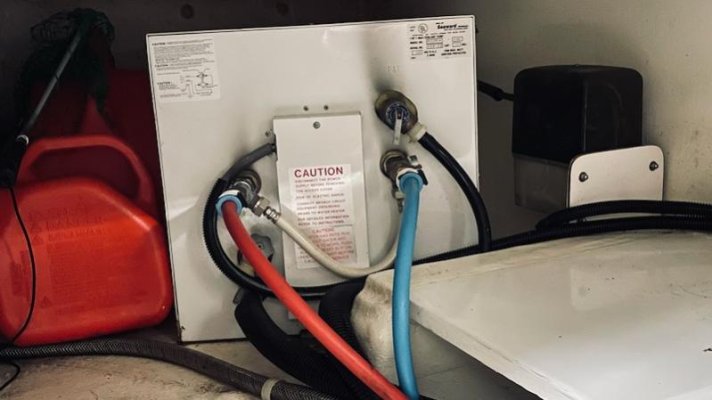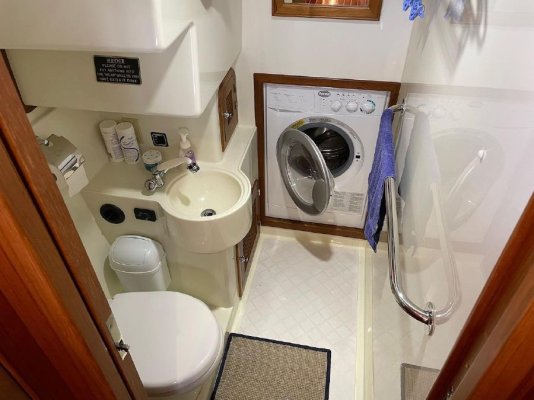HeadedToTexas
Guru
I am the sort who showers aboard every night as opposed to in the marina or not at all. To that end, optimizing my hot water is important to me. As built, the water heater on our mariner 37 is clear back in the lazarette. We waste several gallons waiting for the water in the line to heat up enough to shower.
While we use some hot water at the galley sink, the overhwelming majority (and most important) hot water use is in the shower forward off the master state room. We virtually never use the day head shower and have yet to use hot water at the cockpit shower.
What would it take to move and relocate the water heater to the space in the engine room forward of the workbench? Is it as simple as disconnecting power and water, moving and mounting the unit to stringers forward, then routing and reconnecting the power and water?
While we use some hot water at the galley sink, the overhwelming majority (and most important) hot water use is in the shower forward off the master state room. We virtually never use the day head shower and have yet to use hot water at the cockpit shower.
What would it take to move and relocate the water heater to the space in the engine room forward of the workbench? Is it as simple as disconnecting power and water, moving and mounting the unit to stringers forward, then routing and reconnecting the power and water?



